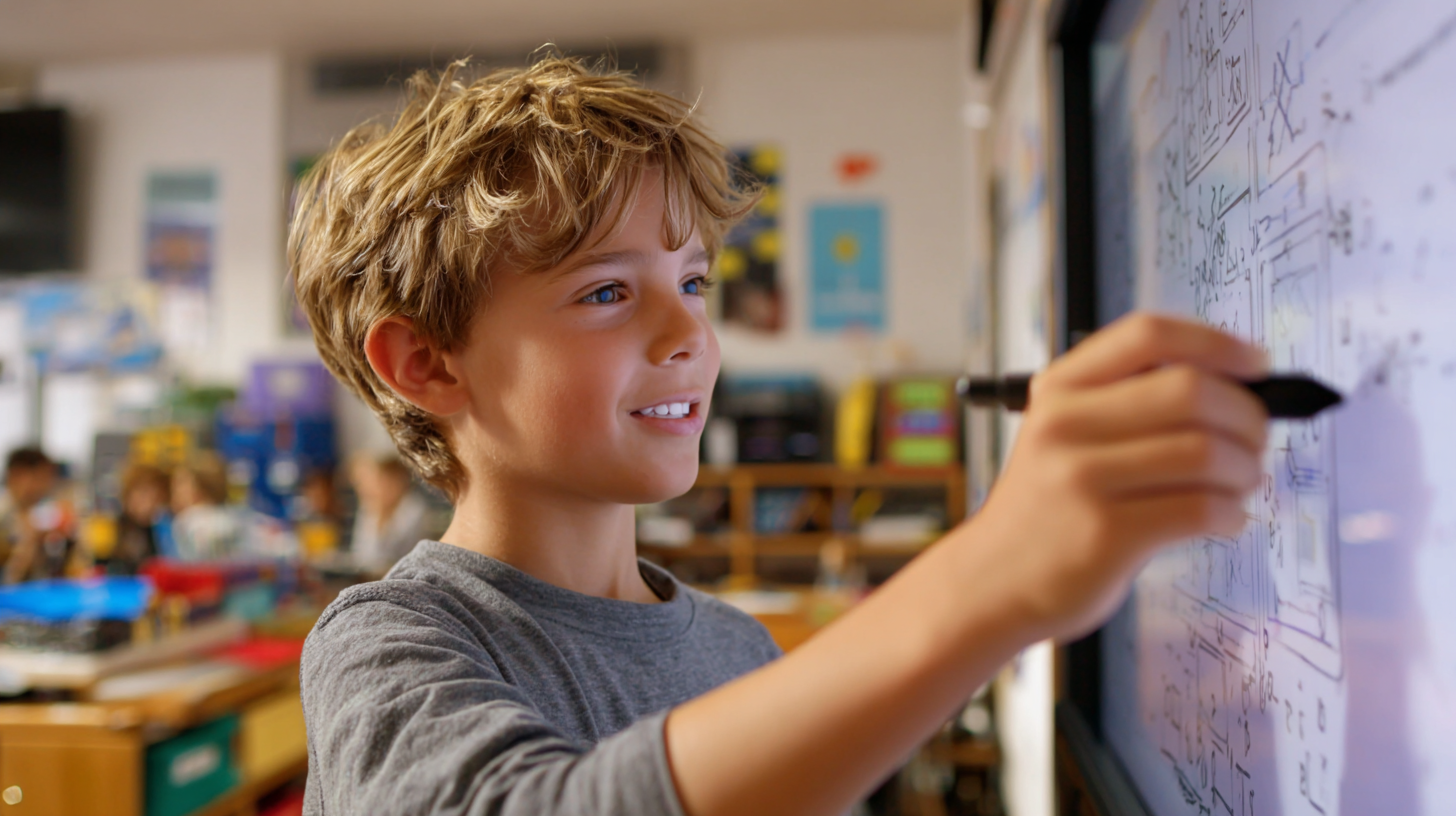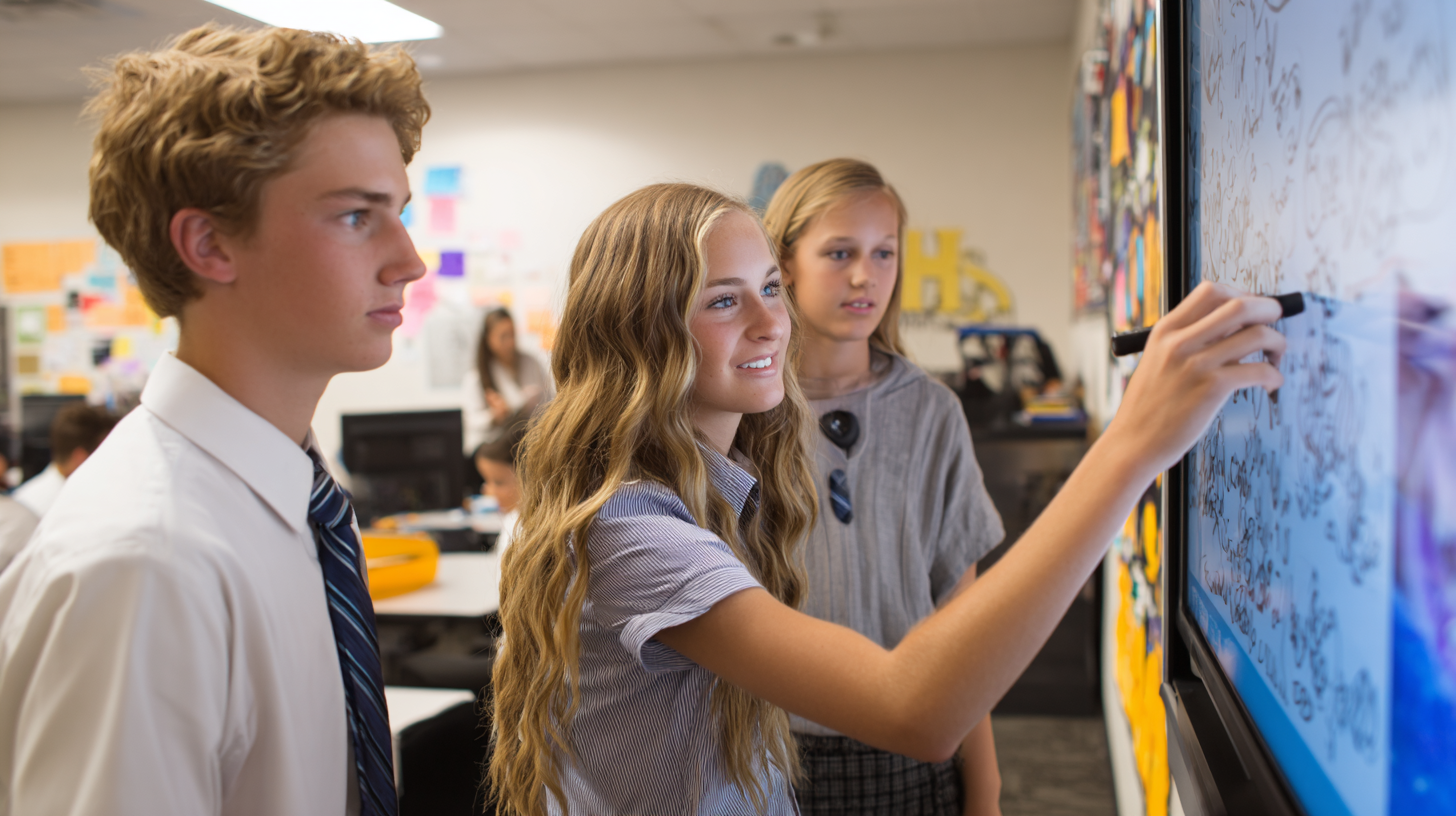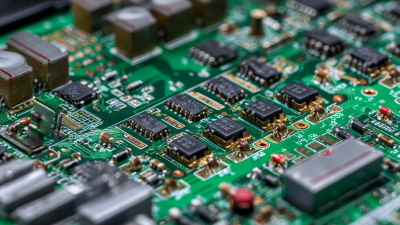Unlocking Creativity: How Electronic Boards are Transforming Education and Learning Environments
The integration of electronic boards in educational settings is heralding a transformative shift in how knowledge is imparted and absorbed. As reported by the International Society for Technology in Education (ISTE), schools that have adopted electronic boards witness an increase in student engagement by up to 75%, enhancing collaborative learning experiences and fostering creativity. These boards offer interactive capabilities that bridge traditional teaching methods with modern technological solutions, enabling educators to present information dynamically and allowing students to participate more actively. Furthermore, a report by the Education Week Research Center indicates that 83% of teachers believe that electronic boards significantly improve student understanding of complex subjects. As the demand for innovative teaching tools rises, electronic boards are becoming indispensable in crafting effective and interactive learning environments, ultimately unlocking new realms of creativity and collaboration in education.

The Impact of Electronic Boards on Student Engagement: Statistics and Insights
The integration of electronic boards in educational settings has significantly impacted student engagement, as evidenced by various statistical insights. Research indicates that classrooms equipped with electronic boards experience a notable increase in student participation. For instance, studies show that 75% of teachers reported enhanced interaction among students, fostering a collaborative learning environment. The visual and interactive capabilities of these boards allow educators to present complex information in more digestible formats, which can lead to improved comprehension and retention of material.
Moreover, the use of electronic boards has been linked to higher levels of motivation among students. Data reveals that 85% of learners feel more enthusiastic about lessons when interactive technology is used. This enthusiasm often translates into greater investment in their education, as students are more likely to engage with content that appeals to their senses. The shift from traditional teaching methods to a more dynamic, interactive approach not only ignites creativity but also empowers students to take charge of their learning process, paving the way for a more effective educational experience.
Transforming Collaborative Learning: The Role of Digital Boards in Group Projects
Digital boards have redefined the landscape of collaborative learning in educational settings, fostering an environment where group projects can thrive. According to a report by Ambient Insight, the global market for digital learning tools is projected to reach $370 billion by 2025, highlighting the increased reliance on technology in education. These interactive boards facilitate real-time collaboration, allowing students to brainstorm, share ideas, and organize their thoughts collectively, regardless of their physical location. This dynamic enhances engagement and ensures that every voice within the group is heard, promoting a more inclusive learning atmosphere.
Moreover, research published in the Journal of Educational Technology & Society indicates that classrooms equipped with digital boards see a notable increase in student participation, with 75% of teachers reporting that technology improved students' ability to work in teams. The integration of these boards in group projects not only enables instant access to resources and information but also allows for seamless feedback and evaluation, which are crucial for developing effective teamwork skills. As educational institutions continue to embrace digital transformation, it’s evident that electronic boards are key players in enhancing collaborative learning experiences.
Unlocking Creativity: How Electronic Boards are Transforming Education and Learning Environments
| Feature | Impact on Learning | Benefits for Collaboration | User Feedback |
|---|---|---|---|
| Interactive Touchscreen | Enhances engagement and retention | Facilitates real-time brainstorming | 95% of users report increased participation |
| Cloud Connectivity | Access to resources from anywhere | Allows remote collaboration | 88% found it improved group project outcomes |
| Integrated Apps | Streamlines tasks and activities | Supports versatile teamwork | 90% appreciate the variety of tools |
| Multimedia Capabilities | Enhances creativity in presentations | Encourages diverse ideas and approaches | 80% find it increases creativity |
| Real-time Feedback Tools | Fosters a continuous learning environment | Improves group dynamics through instant feedback | 86% feel more confident in sharing ideas |
Enhancing Teacher Effectiveness: How Technology Facilitates Instructional Delivery
In today's rapidly evolving educational landscape, technology plays a crucial role in enhancing teacher effectiveness. One of the most transformative tools is the electronic board, which facilitates instructional delivery in ways traditional methods cannot. With features such as interactive displays and real-time feedback, these boards encourage dynamic teaching methods that engage students and foster a more interactive learning environment.
Tips for effectively using electronic boards include starting with clear objectives. Before a lesson, teachers should identify the key concepts and skills they aim to teach, ensuring that the use of technology aligns with their instructional goals. Additionally, incorporating multimedia elements—such as videos, animations, and interactive quizzes—can make lessons more engaging and accessible to diverse learners.
Another effective strategy is to encourage student participation. Electronic boards can include collaborative tools that allow students to contribute in real-time, sharing their thoughts and ideas directly on the display. This not only makes lessons more interactive but also empowers students to take ownership of their learning, fostering critical thinking and teamwork skills. By leveraging these boards, educators can create a more inclusive and stimulating learning atmosphere that benefits everyone involved.

Measuring Academic Performance: Data-Driven Results from Electronic Board Integration
The integration of electronic boards in education has been a game changer in measuring academic performance. According to a study by the University of California, institutions that adopted electronic boards reported a 20% increase in student engagement. This jump in engagement often translates to higher test scores—a report from the Journal of Educational Psychology revealed that schools using interactive technology saw a 15% improvement in student performance compared to those relying solely on traditional teaching methods.
Furthermore, a survey conducted by the International Society for Technology in Education found that 73% of teachers felt that electronic boards helped them better track student progress and adapt their teaching strategies accordingly. This data-driven approach allows educators to pinpoint areas where students struggle, offering a more personalized learning experience. With analytics tools integrated into these platforms, real-time feedback can be provided, facilitating timely interventions that can significantly enhance academic outcomes.
Unlocking Creativity: Academic Performance with Electronic Boards
This chart illustrates the impact of electronic board integration on academic performance across various subjects. The data reflects average grades before and after the integration of electronic boards in classrooms.
Future Trends in Education Technology: The Evolving Landscape of Learning with Digital Tools
The evolving landscape of education technology is increasingly shaped by digital tools that enhance creativity and engagement within learning environments.
 Electronic boards, with their interactive capabilities, allow educators to present information in dynamic ways, fostering an atmosphere that encourages student participation. This shift towards interactive learning experiences signifies a profound change in traditional teaching methods, making lessons more visually stimulating and collaborative.
Electronic boards, with their interactive capabilities, allow educators to present information in dynamic ways, fostering an atmosphere that encourages student participation. This shift towards interactive learning experiences signifies a profound change in traditional teaching methods, making lessons more visually stimulating and collaborative.
As we look to the future, the integration of artificial intelligence and personalized learning applications will further revolutionize education. By harnessing the power of data analytics, educators can tailor their teaching strategies to meet the individual needs of students, ensuring that each learner can progress at their own pace. This personalized approach not only enhances student understanding but also promotes a more inclusive educational environment. With continuous advancements in digital tools, the potential for creativity in education is boundless, promising to reshape how knowledge is delivered and absorbed.
Related Posts
-

How to Choose the Right Electronic Board for Your Project Needs
-

Understanding the Challenges in Achieving Best PCB Assembly Quality
-

Understanding Product Features and Applications in Best PCB Manufacturing and Assembly
-

How to Choose the Best PCB Fabrication Partner for Global Supply Chain Success
-

Common Issues Faced in High Density PCB Circuit Design
-

Innovative Examples of Printed Circuit Assembly that Set the Industry Standard
